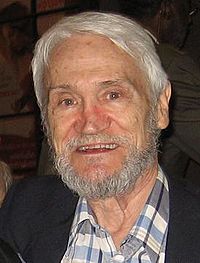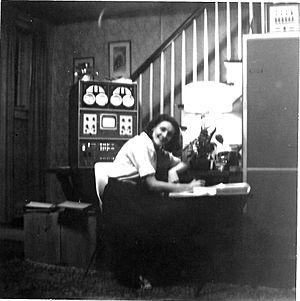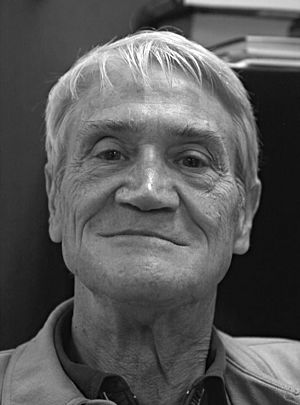Wesley A. Clark facts for kids
Quick facts for kids
Wesley A. Clark
|
|
|---|---|

Wes Clark in 2009
|
|
| Born |
Wesley Allison Clark
April 10, 1927 New Haven, Connecticut, U.S.
|
| Died | February 22, 2016 (aged 88) Brooklyn, New York City, New York
|
| Nationality | American |
| Alma mater | UC Berkeley |
| Known for | TX-0, TX-2, LINC |
| Awards | Eckert–Mauchly Award Computer Pioneer Award National Academy of Engineering member |
| Scientific career | |
| Fields | Computer engineering Internet |
| Institutions | MIT Lincoln Laboratory Washington University Clark, Rockoff and Associates |
Wesley Allison Clark (April 10, 1927 – February 22, 2016) was an American physicist. He is famous for helping design the first modern personal computer. He also played a key role in creating the LINC computer. The LINC was one of the first minicomputers, which were smaller than giant mainframes. Many people see the LINC as an early inspiration for the personal computers we use today.
Clark was born in New Haven, Connecticut. He grew up in New York and California. He studied physics at the University of California, Berkeley, graduating in 1947. Later, he received important awards for his work in computer design. These included the Eckert–Mauchly Award and the Computer Pioneer Award.
Contents
Building Early Computers
In 1952, Clark started working at the MIT Lincoln Laboratory. There, he helped develop the Memory Test Computer (MTC). This machine was used to test new memory parts for a larger computer called Whirlwind. Clark spent many hours using the MTC. This experience made him believe that computers should be easy for people to use. He thought computers should be tools available whenever someone needed them. This idea guided his designs for the TX-0, TX-2, and the LINC computers.
Clark's design for the TX-2 computer was very special. It included new ways for people to interact with the machine. For example, it had a screen and a light pen. A student named Ivan Sutherland used these tools to create Sketchpad. This was a groundbreaking program that let people draw directly on the computer screen. This invention led to interactive computer graphics, which we use all the time today.
Innovations at Washington University
In 1964, Clark moved to Washington University in St. Louis. There, he worked with Charles Molnar on something called "macromodules." These were like basic building blocks for computers. The idea was to create parts that computer users could put together. This would let them build and expand their own computers. They wouldn't need to be experts in electrical engineering to do it.
Helping Create the Internet
Clark had a very important idea for the ARPANET. This was an early version of the Internet. In 1967, he suggested using small, separate computers. These computers would handle sending messages between larger computers. They were later called Interface Message Processors (IMPs). This idea helped create a network that could send information efficiently. It also made sure the main computers didn't get overloaded. This concept was a big step towards how the Internet works today.
Visiting China
In 1972, Clark was part of a group of computer scientists who visited China. This trip happened shortly after President Nixon's historic visit. For three weeks, they toured computer facilities in Shanghai and Beijing. They discussed computer technology with Chinese experts. The trip helped restart friendly talks between the two nations. It also opened up ways for them to share technical ideas.
See also



